Hiking trails offer adventurers a chance to connect with nature and enjoy breathtaking scenery. But can you carry a gun while hiking?
It is very important to carry a gun while hiking. However, it’s not uncommon to encounter unexpected situations, which can pose a threat to your safety in the great outdoors.
Contents
As a hiker, you might be wondering if carrying a gun is allowed and how to do it safely. Depending on the jurisdiction, it is very necessary to carry a gun.
In this article, we will dive into the regulations and laws surrounding carrying a gun while hiking and provide essential information for hikers to consider.
Can You Carry a Gun While Hiking?
Laws regarding carrying guns while hiking vary by jurisdiction. In some places, it’s legal with proper permits, while others may strictly prohibit it.
Research local regulations before carrying a firearm, considering factors like wildlife threats and personal safety.
Ensure compliance with all laws, obtain required permits, and prioritize responsible gun ownership. Remember, safety and awareness are key;
understanding the environment and respecting legal boundaries ensures a secure hiking experience for both individuals and the community.
Key Takeaways
- Carrying a gun while hiking is permitted for self-defense purposes.
- Understanding the laws and regulations surrounding firearms on hiking trails is crucial before carrying one.
- Essential gear, such as winter gear, a comprehensive gear guide, GPS apps like Gaia GPS, and bear spray, should be considered when carrying a gun while hiking.
- There are different carry options and holster types to choose from when carrying a gun while hiking.
- State-specific laws and permit requirements regarding concealed carry and open carry laws must be followed.
Understanding the Laws and Regulations

When it comes to carrying firearms on hiking trails, it’s essential to understand the laws and regulations that apply.
National parks and the famous Appalachian Trail have specific rules that hikers must adhere to when carrying a firearm.
- Firearm Laws: Federal laws govern firearms in national parks and on hiking trails, but state laws may also apply. You must comply with both sets of laws.
- Concealed Carry: Hikers who carry firearms while hiking must have the appropriate permits to do so, including concealed carry permits where applicable.
- Open Carry: In some states, open carry of firearms is legal, while others prohibit it. It’s important to know the specific laws in the state you will be hiking in.
It’s crucial to note that carrying a firearm while on a hiking trail is not allowed in all states. Be sure to research the laws and regulations that apply to the specific state and trail you plan to hike on before carrying a weapon.
Furthermore, it’s worth noting that national parks, including the Appalachian Trail, have specific regulations regarding firearms.
The National Park Service (NPS) prohibits the use or possession of firearms on park land unless authorized by federal law.
This means that hikers who plan to carry firearms on the Appalachian Trail must comply with both NPS regulations and the applicable state laws.
Table: Firearms Regulations on the Appalachian Trail and National Parks
| Regulation | Appalachian Trail | National Parks |
|---|---|---|
| Firearm Use | Allowed with applicable state and federal laws | Prohibited unless authorized by federal law |
| Concealed Carry Permit | Required in some states | Required in some states |
| Open Carry | Legal in some states | Prohibited in some parks |
Understanding the laws and regulations surrounding firearms on hiking trails is crucial.
If you plan to carry a firearm while hiking, be sure to research and comply with the specific laws that apply in your state and on the trails you plan to explore.
Essential Gear for Carrying a Gun While Hiking

When hiking with a gun, it’s essential to have the proper gear to keep yourself safe. Here are some items you should consider:
Winter Gear
If you are hiking in colder temperatures, you’ll need to pack appropriate winter gear. This includes insulated jackets, gloves, hats, and boots to keep you warm and dry.
It’s also important to have a reliable pair of crampons or snowshoes to ensure traction on icy terrain.
Gear Guide
A comprehensive gear guide can help you prepare for your hiking trip and ensure that you don’t forget any essential items.
Look for a guide that includes a detailed list of gear, tips on packing efficiently, and recommendations for trusted brands and products.
Gaia GPS
A GPS app like Gaia GPS can help you navigate unfamiliar terrain and plan your route in advance.
With features like topographic maps, trail information, and real-time location tracking, you can stay on course and avoid getting lost.
Bear Spray
Bear spray is an effective defense against aggressive animals on the trails.
It’s important to carry bear spray in a holster that is easily accessible in case of an emergency. Practice using bear spray before your trip so you can react quickly and confidently if needed.
Specific Considerations for Day Hikes
If you’re going on a day hike, you’ll need to pack light and carry only the essentials. A smaller backpack with a water reservoir, food, and first aid kit is necessary.
Consider using a chest holster that provides quick access to your gun while keeping it out of the way when you need to use your hands.
Remember, it’s crucial to have the right gear when carrying a gun while hiking for your safety and the safety of others.
Exploring Different Carry Options

If you’re an outdoor backpacker, you might have considered the option of carrying a gun while hiking. Before you do so, it’s important to decide on the right method of carry that works best for you.
There are a few options to consider:
- On-body carry: This method involves carrying a gun on your person. It offers quick and easy access to your firearm in case of an emergency, but can be uncomfortable and cumbersome.
- Off-body carry: This method involves carrying a gun in a backpack or other gear. It offers better comfort and mobility, but can make accessing the firearm more difficult in high-pressure situations.
- Hybrid carry: This method involves using a holster that allows for both on-body and off-body carry. It offers a compromise between the two methods, but can be more expensive and require additional training.
Ultimately, the decision on how to carry a gun while hiking is a personal one that should take into account your specific needs and preferences.
It’s recommended to try out different methods to see what feels most comfortable and practical for you.
“The most important aspect of carrying a gun while hiking is to ensure you are comfortable with your chosen carry method and can easily access your firearm in case of an emergency.”
State-specific Laws and Permit Requirements
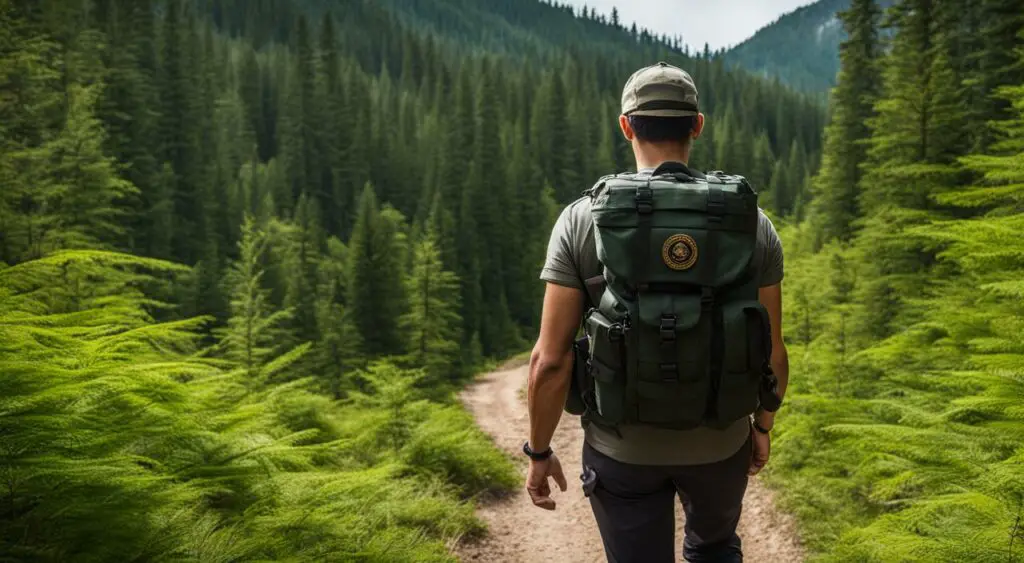
If you’re considering carrying a firearm while hiking, it’s crucial to understand the state-specific laws and permit requirements.
This will ensure you are carrying your firearm legally and responsibly. In the United States, there are two types of permits: concealed carry and firearms open carry.
Each state has different laws regarding these permits and the carrying of firearms while hiking.
- Concealed Carry: This permit allows you to carry a concealed firearm on your person while hiking. However, you must meet certain criteria and follow specific rules. This includes passing a background check, completing a firearms training course, and obtaining a permit from your state of residence. The requirements vary by state, so be sure to research the laws in your state before applying for a concealed carry permit.
- Firearms Open Carry: This permit allows you to carry a firearm openly on your person while hiking. This means the firearm is visible to others. This also has a specific set of requirements and regulations, which vary by state. Before deciding to open carry a firearm while hiking, be sure to research the laws in your state to ensure you are carrying your firearm legally and responsibly.
When carrying a firearm while hiking, there are three things you must consider:
- Concealed or open carry: Will you be carrying the firearm concealed or openly?
- State laws: What are the state laws in the state where you will be hiking?
- Permit requirements: What are the requirements for obtaining a concealed carry or open carry permit in the state where you will be hiking?
It’s important to remember that carrying a firearm while hiking is a serious responsibility.
You must carry your firearm legally and responsibly, following all state-specific laws and regulations.
Choosing the Right Holster
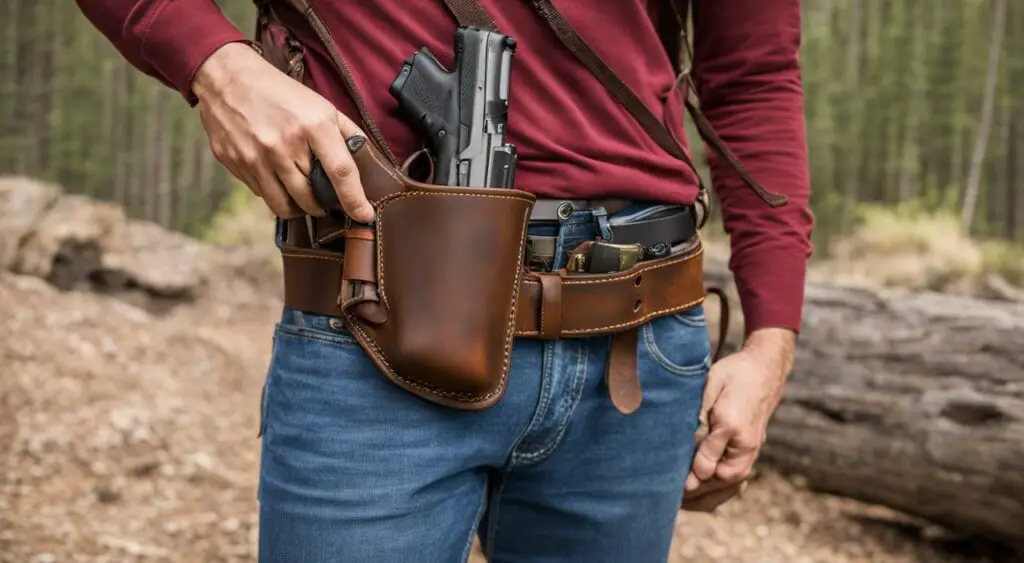
When it comes to carrying a gun while hiking, choosing the right holster is essential. The holster is what keeps your weapon secure and within reach.
Keep the following three things in mind when selecting a holster for your weapon:
- Fit: Your holster should fit your specific weapon. Different models will require different holsters, so make sure you choose one that is designed for your gun.
- Retention: Retention refers to how secure your gun is in the holster. You want your weapon to be easily accessible, but also secure enough that it won’t fall out accidentally. Look for a holster with proper retention features to ensure your gun stays put.
- Accessibility: Your holster should allow you to draw your weapon quickly and easily. Practice drawing your weapon from your holster before you hit the trails to make sure you can do so smoothly and efficiently.
When shopping for a holster, you’ll find that there are many different types to choose from. Some of the most common options include:
| Type of Holster | Description |
|---|---|
| Inside the waistband | This type of holster fits inside your waistband, allowing you to conceal your weapon more easily. It can be uncomfortable to wear for long periods, but is a popular option for those who prioritize concealment. |
| Outside the waistband | As the name suggests, this holster sits outside your waistband and is easier to access. It is also more comfortable to wear than an inside-the-waistband holster. However, it is less concealable, so keep this in mind when making your selection. |
| Ankle holster | This type of holster attaches to your ankle and allows you to carry your weapon more discreetly. However, it can be awkward to access quickly, so it may not be the best option for hikers who need to draw their weapon in a hurry. |
Choosing the right holster is an important part of your hiking gear selection when planning to carry a weapon.
By keeping the above factors in mind, you can ensure that you select a holster that fits your specific needs and preferences.
Staying Safe on the Trails

When you’re hiking, safety should always be your top priority. This is especially true if you’re carrying a gun for self-defense.
One of the best ways to stay safe on the trails is to ensure you have the right equipment and knowledge, including hiking maps, gear, and safety tips.
Additionally, it’s essential to shop at reputable outdoor stores and trusted hiking brands to ensure you have high-quality gear that can be relied upon.
Using Hiking Maps
One of the easiest ways to stay safe on the trails is to use hiking maps. These maps provide you with a clear understanding of the hiking trails and can help you find your way if you get lost.
They also offer insights into important features along the trails, including water sources, scenic viewpoints, and dangerous terrain, allowing you to adjust your route and stay safe.
Shopping at Outdoor Stores
When shopping for hiking gear, it’s essential to choose a reputable outdoor store or shop. These stores offer high-quality gear that is designed specifically for outdoor enthusiasts, ensuring it can be relied upon when you’re on the trails.
Additionally, shopping at outdoor stores can provide you with access to professional advice and insights from experienced hikers, which can help you make informed decisions about the gear you need.
Trusted Hiking Brands
When it comes to hiking gear, it’s important to choose trusted hiking brands.
These companies have a reputation for producing high-quality, reliable gear that is designed to withstand the rigors of the outdoors.
Whether you’re looking for hiking boots, backpacks, or other essential gear, choosing a trusted hiking brand can help ensure that your gear is strong and durable.
Hiking Trips and Tours
If you’re new to hiking, or you simply want a little extra guidance and safety on the trails, consider booking a hiking trip or tour.
These tours are led by experienced guides who can provide you with valuable insights into the trails, as well as ensure that you stay safe and secure while hiking.
Additionally, hiking tours and trips can be a great way to meet other outdoor enthusiasts and explore new trails.
Additional Safety Measures
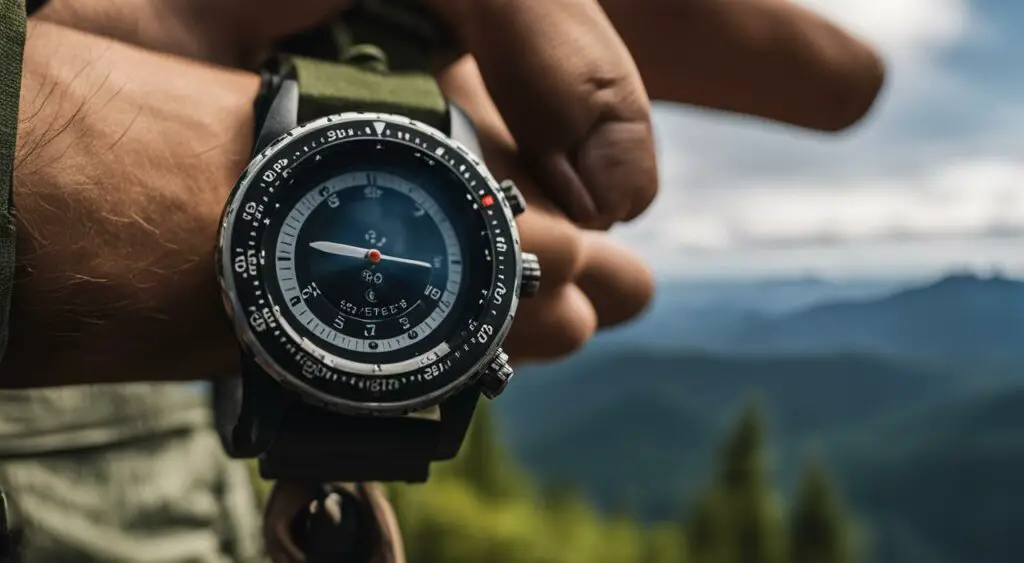
While carrying a gun while hiking can enhance your personal safety, it is important to take additional safety measures to ensure a safe and enjoyable hiking adventure.
Finding Reliable Hiking Places
When planning a hiking trip, it is important to do your research and find reliable hiking places. Look for trails that are well-maintained, heavily trafficked, and have good reviews from other hikers.
Websites like Hiking Project, AllTrails, or NatureFind can help you find the best hiking spots near you.
Using a Hiking Guide
A hiking guide can help you navigate trails, identify plants and animals, and learn about the history and geology of the area.
Consider purchasing a guidebook or downloading a hiking app like Guthook Guides or REI’s Hiking Project to assist you on your hiking trips.
Visiting a Reputable Hiking Shop or Outdoor Store
If you are new to hiking or need to upgrade your gear, visit a reputable hiking shop or outdoor store.
Knowledgeable staff can help you find the right hiking boots, clothing, navigation tools, and other essentials for your hiking adventure.
Considering a Hiking Watch
A hiking watch can provide you with important information such as time, altitude, GPS location, and weather updates.
Look for a watch with a durable design, long battery life, and useful features like a compass or heart rate monitor.
Embracing the Excitement of a Hiking Adventure
Finally, embrace the excitement of a hiking adventure.
Hiking can be a rewarding and fulfilling experience that allows you to connect with nature and challenge yourself physically and mentally.
By taking the necessary safety precautions, you can enjoy your hike with peace of mind.
The Appalachian Trail and National Park Considerations

If you’re planning to hike the iconic Appalachian Trail or explore national parks, it’s important to understand the regulations and restrictions regarding carrying a gun while hiking.
The Appalachian Trail runs for over 2,000 miles and spans across 14 states, so regulations can vary depending on location.
For example, in Maine and Georgia, firearms are allowed and do not require a permit, while in New York and New Jersey, permits are necessary for carrying a firearm.
It’s crucial to research and understand the laws in each state you’ll be hiking through.
When it comes to national parks, firearms are generally permitted but must be unloaded and stored out of reach while in certain areas, such as visitor centers and government buildings.
It’s important to note that state-specific laws still apply even in national parks.
Additionally, it’s recommended that hikers avoid using firearms in encounters with wildlife on the trail. Instead, carry bear spray as a non-lethal option for self-defense.
To ensure you’re fully prepared and compliant with regulations, visit an outdoor store or shop for more information on the specific rules and guidelines in your hiking area.
You can also find hiking trails near you and obtain accurate maps, including the Appalachian Trail map, before embarking on your adventure.
Essential Gear Guide for Hiking and Camping
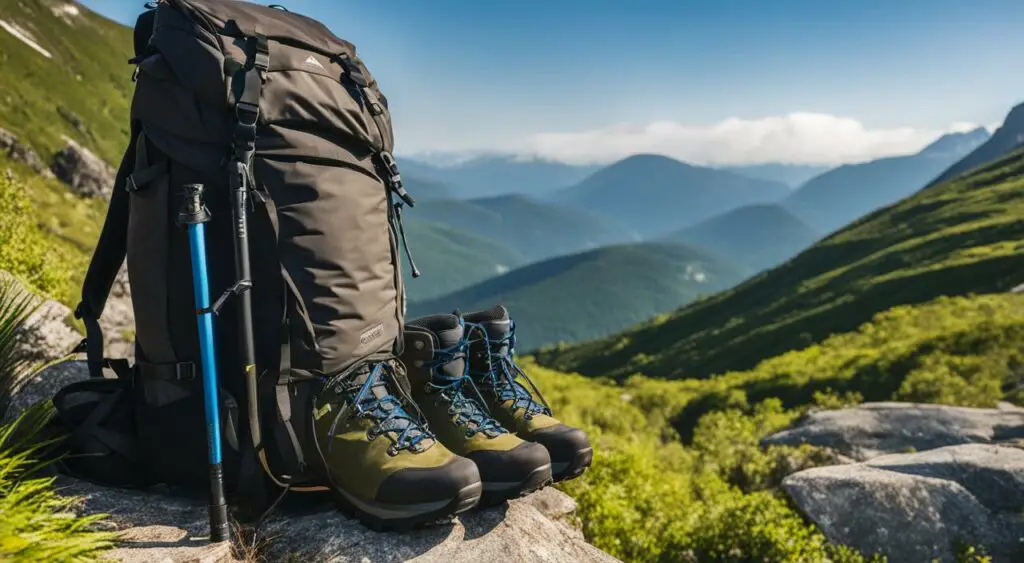
When it comes to hiking and camping, having the right gear is essential to ensure your comfort and safety on the trails.
Whether you’re planning a day hike or a longer adventure, there are a few must-have items that should always make it into your backpack.
Hiking gear: Your hiking gear should include comfortable and durable clothing, sturdy hiking boots, and a backpack to carry your essentials.
Packing lightweight clothing options that you can layer is a great way to prepare for changing weather conditions.
Don’t forget to also bring sunscreen, bug spray, and a hat to protect yourself from the sun and pesky insects.
Wall tent: If you’re planning on camping overnight, investing in a wall tent can be a great way to stay comfortable and protected from the elements.
A wall tent is a large, sturdy tent that is designed to withstand wind and rain, providing you with a dry, warm place to sleep.
| Wall Tent Features | Description |
|---|---|
| Size | Choose a size that can comfortably accommodate you and your camping gear. Most wall tents come in sizes that range from 8×10 feet to 16×20 feet. |
| Material | Look for tents made from durable, waterproof materials like canvas or nylon. Some tents may also come with a built-in floor for added protection from moisture and insects. |
| Features | Consider features like windows, doors, and vents to help regulate temperature and provide additional ventilation. |
Camping store: When you’re ready to hit the trails, stop by a camping store to stock up on any last-minute essentials.
A camping store will have everything you need, from camping stoves and lanterns to first aid kits and water filters.
Nature trails near me: If you’re looking for hiking and camping options near you, be sure to search for “nature trails near me.”
You may be surprised to find some hidden gems in your area. And if you’re up for a challenge, consider hiking the Appalachian Trail, a 2,200-mile trail that runs from Georgia to Maine.
By being prepared with the right gear, you can enjoy your hiking and camping adventures to the fullest. Happy trails!
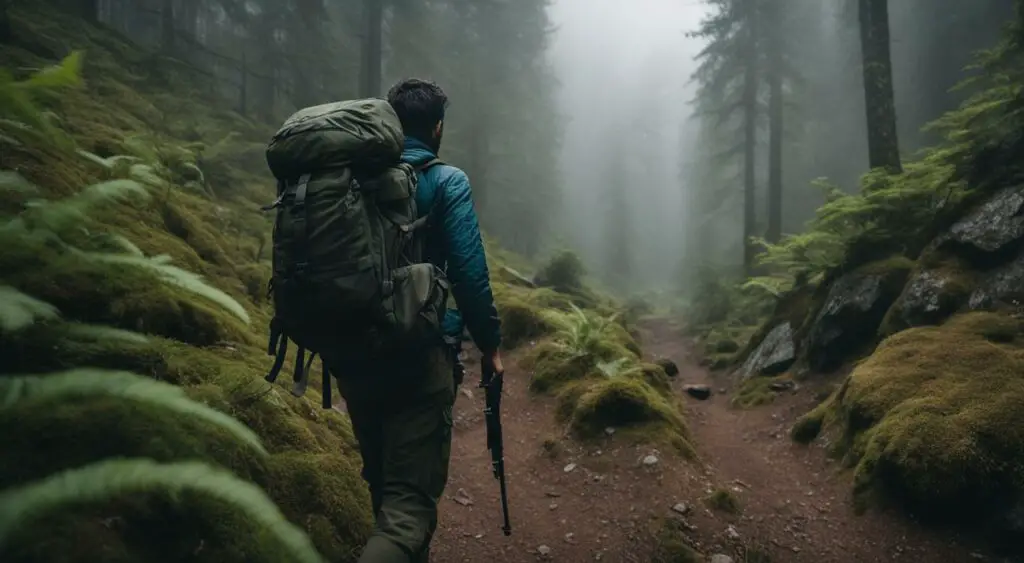
Conclusion
Now that you have explored the laws and regulations surrounding carrying a gun while hiking and the essential gear and safety measures needed, you can confidently hit the trails with an added layer of personal security.
Always remember to comply with state-specific laws and permit requirements, choose the right holster, and stay knowledgeable about the hiking trails you venture on.
If you plan to hike on the Appalachian Trail or within national parks, be sure to research the unique considerations and regulations that apply to these areas before carrying a gun.
Additionally, equipping yourself with the proper hiking and camping gear can enhance your overall hiking experience and make your adventure more comfortable and enjoyable.
By following these guidelines and providing yourself with the necessary resources, you can make your hiking journey a successful one.
Always prioritize your safety and well-being, and remember that the great outdoors are waiting for you to explore.

FAQ
-
Can I carry a gun while hiking?
Yes, you can carry a gun while hiking for self-defense purposes.
-
What are the laws and regulations regarding carrying firearms on hiking trails?
The laws and regulations regarding carrying firearms on hiking trails vary, so it’s important to familiarize yourself with the specific rules that apply to your location. This includes understanding the rules for national parks and the Appalachian Trail.
-
What gear do I need for carrying a gun while hiking?
When carrying a gun while hiking, it is important to have appropriate winter gear, a comprehensive gear guide, a GPS app like Gaia GPS, and bear spray. Additionally, there are specific considerations for day hikes.
-
What are the different carry options for carrying a gun while hiking?
There are various carry options for hikers who choose to carry a gun while hiking. It’s important to consider the pros and cons of different methods of carry to find what works best for you.
-
What are the state-specific laws and permit requirements for carrying firearms while hiking?
State-specific laws and permit requirements for carrying firearms while hiking can vary. It is important to research and understand concealed carry and open carry laws, as well as the three key things to consider when carrying a firearm legally and responsibly.
-
How do I choose the right holster for carrying a gun while hiking?
When choosing a holster for carrying a gun while hiking, there are three essential factors to consider: comfort, accessibility, and retention. There are also different types of holsters available to meet your specific needs.
-
What are some safety tips for hikers who carry a gun while hiking?
It is important for hikers who carry a gun while hiking to understand the trails they are hiking, use hiking maps, and rely on trusted outdoor shops and hiking brands. These safety measures can help ensure a safe and enjoyable experience.
-
What additional safety measures can I take when carrying a gun while hiking?
In addition to carrying a gun, hikers can enhance their security by finding reliable hiking places, using a hiking guide, visiting a reputable hiking shop or outdoor store, considering a hiking watch, and embracing the excitement of a hiking adventure.
-
Are there any specific considerations for carrying a gun while hiking on the Appalachian Trail or within national parks?
Yes, there are unique considerations and regulations that apply to carrying a gun while hiking on the Appalachian Trail and within national parks. It’s important to familiarize yourself with these specific rules and regulations before embarking on your journey.
-
What essential gear do I need for hiking and camping?
In addition to a gun, essential gear for hiking and camping includes must-have hiking gear, a wall tent, and recommendations for shopping at camping stores. You can also find tips for finding nature trails near you, including the Appalachian Trail.








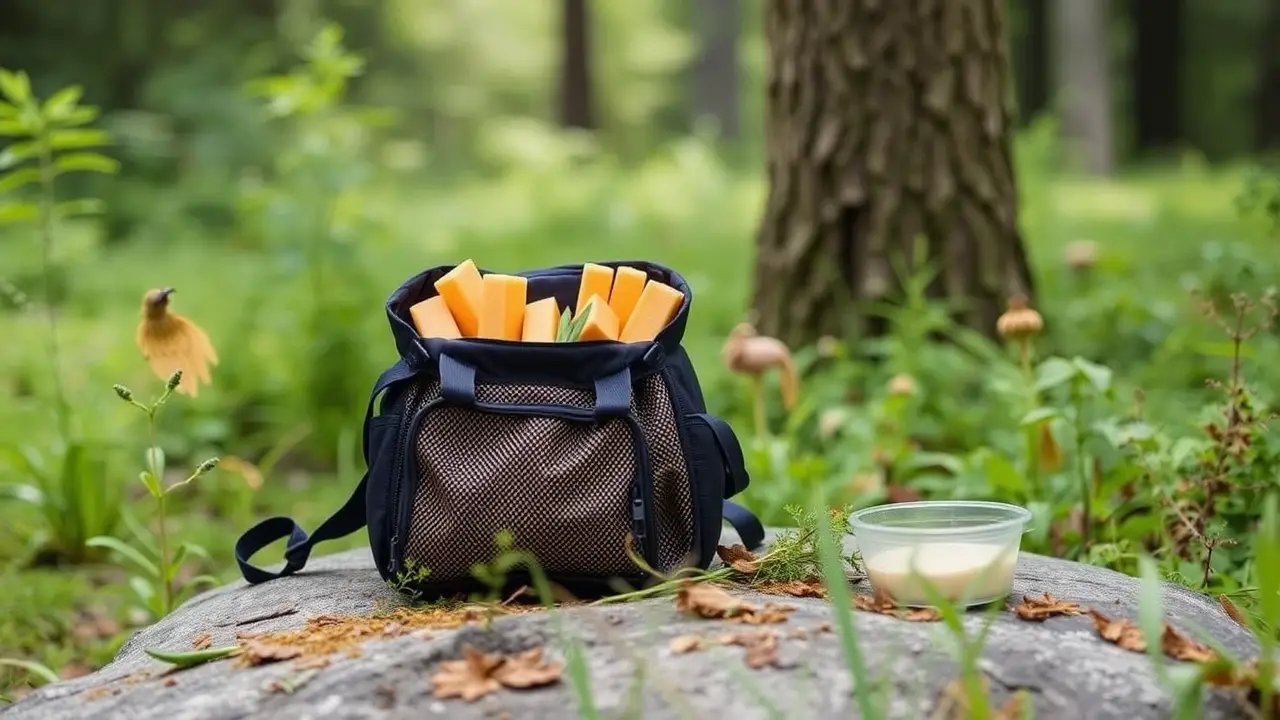
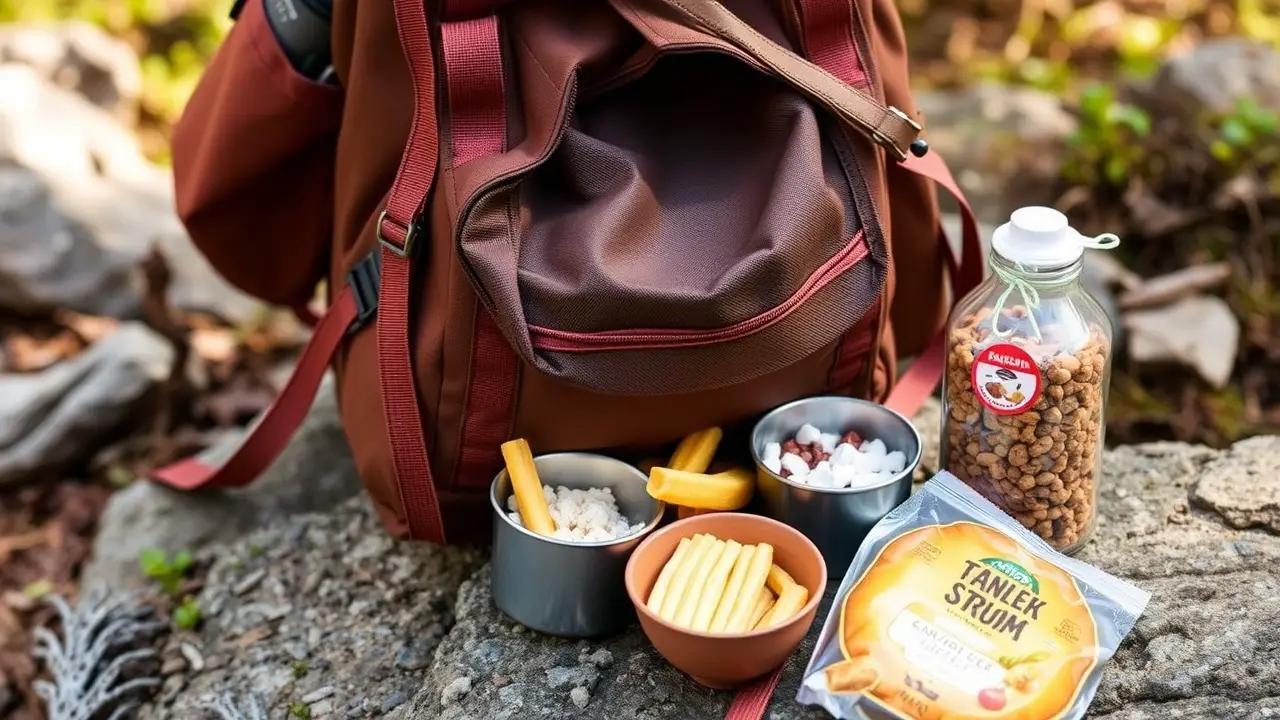
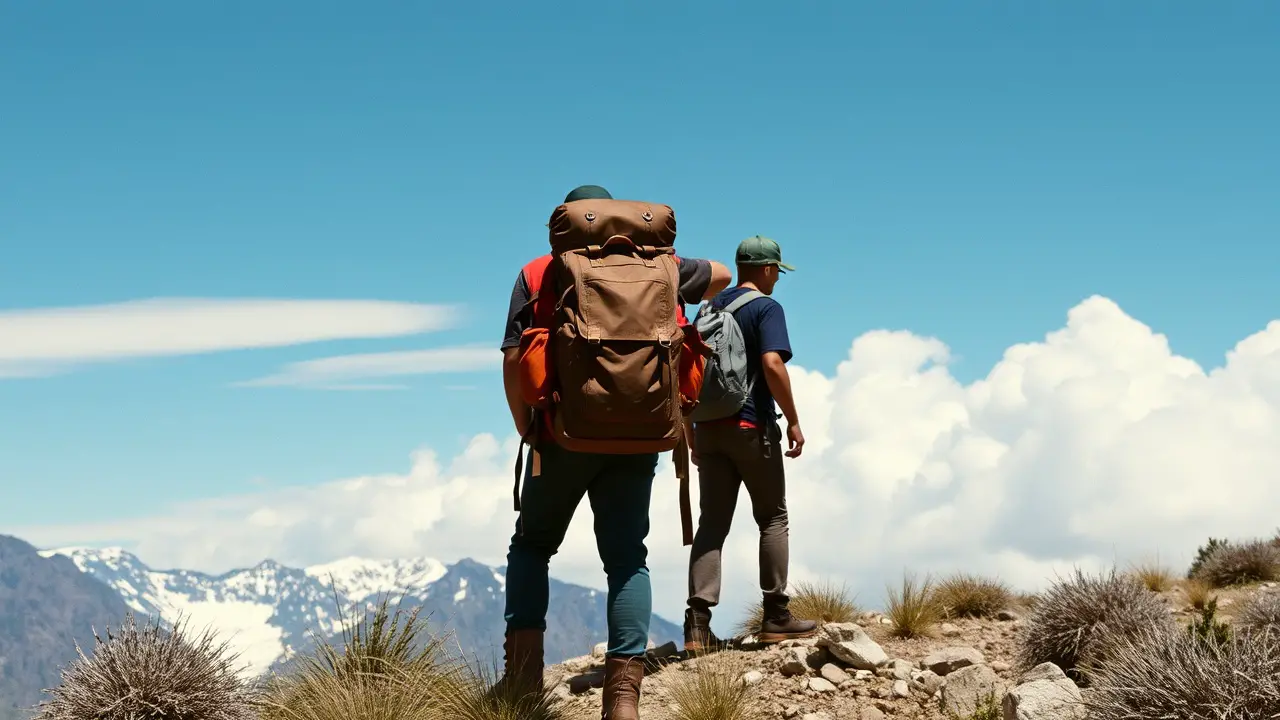
Leave a Reply